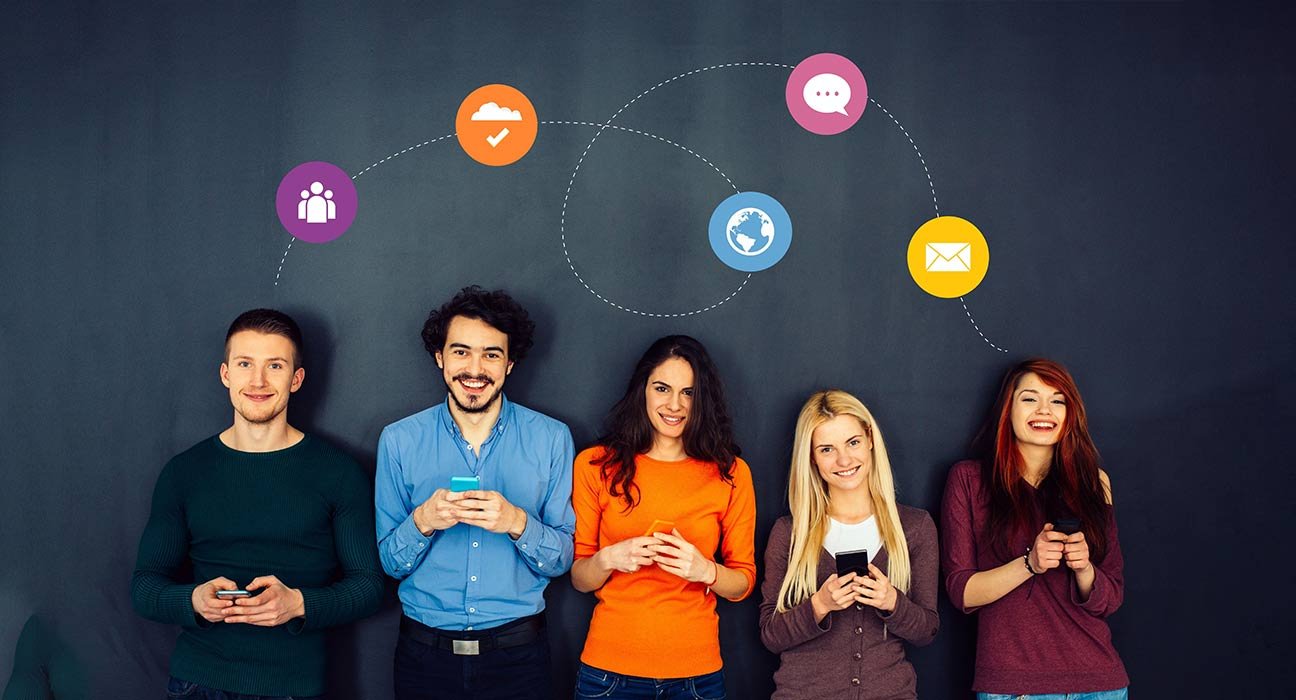Media psychology is a growing field of psychology, which studies the impact of media and technology on human behavior. We are in an age where every age group is dependent on some type of media and is consuming media in some form from the moment they wake up. For example, you wake by the alarm and while you brush your teeth and make breakfast you are surfing on social media or even some headlines app for news reports for the day, you take a bath and again you have your phone with you checking the messages, and like this all day, whenever you get some time, you consume media. With the growing reliability of technology and media in our day-to-day life it is important to know how it is impacting us. Hence media psychology emerged as a field in psychology to bridge the gap of understanding.
According to Clinical psychologist and Mental Health expert Mala Vohra Khanna, “People are getting so influenced by social media that they don’t know the reality of what people are going through. People follow influencers and their relatives on social media; they have that gala day every day. People create conflict in their lives, feel that they are inferior to others, and think others have an ideal life, according to them. They don’t see what is happening behind social media; it’s not always real.”
It essentially investigates how media and technology affect people’s attitudes, sentiments, and actions. It involves the application of psychological theories and principles to understand various aspects of media such as television, social media, film, video games, advertising, and virtual reality. Researchers, mental health providers, consultants, educators, innovators, and communicators are among the roles that media psychologists can play. Any industry or job that uses or develops mediated communications and information technology can benefit from media psychology.
Also Read: Exaggerated Headlines in Today’s Media Landscape
Societal Impact and Dynamics of Media
Clinical Psychologist and mental health expert, Tanya Anand says, “It’s important to recognize both the positives and negatives of media. While there are negative impacts, such as bullying on social media, People must also acknowledge and not ignore the many benefits it offers.” According to her, the media has the power to facilitate learning and use services from any part of the world, with people of all ages using online platforms for skill enhancement. The COVID-19 pandemic accelerated the interaction between humans and technology in the most beneficial ways.
Tanya Anand said, regulations are most important to prevent the misuse of the media. People keep getting messages about upgrading their privacy policies, and new rules come up from time to time, to protect their data. These are some effective ways to prevent scams. Rules for regulating and screening sensitive content being uploaded online is another preventative feature. As such, people cannot upload a photo with a weapon or sensitive content without trigger warnings. Also, special authorities and regulatory bodies like cyber cells play a vital role in cybersecurity.

The influence of media on behavior and perception is the main topic of study within media psychology and it encompasses the various ways in which media can influence and shape individuals’ thoughts, behavior, attitudes, beliefs, and actions.
Some key points in considering this include:
1) Social Learning and Modeling:
Media especially through portrayals of characters and scenarios can serve as powerful models for learning behavior. We have seen this in the famous Bobo doll experiment by Albert Bandura. Following a series of child tests, Albert Bandura proposed the social learning theory. The experiments proved that children learn through observation and later imitate similar behavior with the combination of environmental and cognitive factors.
Hence children and adults might even model the behaviors shown in the shows and the media they consume. A conducted study shows that exposure to media (TV, music, video games) portraying prosocial conduct can also elevate prosocial behavior. Bandura’s experiments also included modeling of aggressive behavior by children and hence, watching action movies and video games cause children to become aggressive.
Also Read: How Media Influences Women’s Empowerment
2) Body Image and Self-Esteem:
Media representations of idealized body images, particularly in advertisements and entertainment media, can contribute to distorted perceptions of body image and self-esteem issues, especially among vulnerable populations such as young adults and adolescents. This can lead to body dissatisfaction, eating disorders, and low self-esteem.
In early 2018, several newspapers noted their concern about social media platforms like Instagram and Snapchat potentially influencing users’ decisions to have plastic procedures. Several plastic surgeons have written about the requests they received that sounded like what a “filtered” Snapchat photo might look like. One plastic surgeon even talked about a patient who created a “filtered” image. This ‘Snapchat dysmorphia’ is an indicator of how we seek validation from social media and give in to the unrealistic beauty standards of social media. Contrarily, social media can also promote body positivity among people, practicing body acceptance and support groups for people who want to practice a healthy lifestyle.

Researchers examined if body-positive social media can result in better body image in a study published in 2021.233 people who identified as female participated in the experiment and were randomized into one of the groups viz., body positive group, a body-positive group with captions and the control group. According to the results, participants’ body satisfaction increased when they saw body-positive social media posts, whether or not there were captions. These effects were marginally more pronounced for the photos that had captions.
Also Read: How does social media materialism bring both stress and unhappiness?
3) Cognitive Priming and Stereotypes:
Media can prime cognitive processes by activating certain thoughts, beliefs, and stereotypes in an individual’s mind. For example, exposure to media that reinforces stereotypes about gender, race, and social roles can shape how individuals perceive and interact with others in real life. Research has found that Exposure to stereotypical representations seems to reinforce attitudes toward gender stereotypes and support gender role norms. It also encourages discrimination, harassment, and aggression in men and stifles women’s aspirations in their careers. Also, it seems that being exposed to objectifying and sexualizing representations is linked to internalizing societal beauty standards, endorsing sexist beliefs, and tolerating abuse and body shame. It also promotes racial and communalist stereotypes.
4) Political And Ideological Influence:
Media, including social media and news media, play a significant role in shaping political attitudes, opinions, and behaviors. Biases in media coverage, selective exposure to ideologically aligned content, and the spread of misinformation can influence an individual’s political beliefs and decision-making progress. According to recent research, media exposure can significantly influence how the public thinks, feels, and behaves when it comes to politics. However, because people tend to look for information that supports their preexisting beliefs, these studies may have overstated the effects of media influence.
Propaganda, one way that media bias affects voters at the polls, can distort voter decisions and views of reality. In the 2014 Indian general elections, the BJP outspent the Congress Party in terms of advertising, and voters who were exposed to more mediums were more likely to support the BJP. Media bias frequently uses selective information to distort voters’ perceptions of the candidates’ efficacy, provocative rhetoric to encourage more people to vote, and appeasement to persuade individuals that they will personally gain from casting a particular ballot.
As per Mala Vohra Khanna, to prevent the negative effects of social media, first people need to understand, that everything seen or heard in the media is not reality, that is only a part of it. People get attached very quickly after watching a video and they try to see and project themselves in the video, If they see something ideal, they want to do the same thing like having a luxurious life, buying luxury clothes, and doing everything that makes their life perfect. They need to start living with reality and not try to control everything.
Also Read: How Social Media Affects Our Attention Span

The Role of Media Platforms
The media that people consume highly influences them, and the algorithm of these media platforms delivers what individuals desire. Hence it is important to be aware of these influences and try to challenge the bias that comes with these perceptions and influences. It is also important to note that the influence of media on individual behavior and perception is multifaceted, influenced by factors such as individual differences, media content characteristics, social context, and cognitive processes.
Media psychologists continue to better study and understand these dynamics to explore how media shapes human cognition, thoughts, and emotions in diverse contexts.
According to clinical psychologist and mental health expert Gunjan Joshi, many individuals are driven by a desire to belong to social groups and seek validation from others. This becomes a problem when people begin to follow what the media is portraying blindly as that is when people start losing the concept of individuality. It should be more important to draw boundaries between the influencers and their opinions because people follow them regularly. There is still a difference between a reel and real life. Everything that is displayed on social media is not real. A balanced perspective should be developed in society, where they can give importance to their individual thinking. People should be aware of what’s trending on social media, but it’s not imperative to follow the trend at the same time.
References+
- https://www.apadivisions.org/division-46/about/what-is#:~:text=Media%20psychology%20includes%20research%20and,%2C%20mobile%20media%2C%20interface%20design%2C
- https://mprcenter.org/what-we-do/what-is-media-psychology/
- https://www.ncbi.nlm.nih.gov/pmc/articles/PMC5933578/
- https://www.stimson.org/2021/media-bias-and-democracy-in-india/
- https://link.springer.com/referenceworkentry/10.1007/978-981-13-0242-8_26-1
- https://www.ncbi.nlm.nih.gov/pmc/articles/PMC10218532/













Leave feedback about this